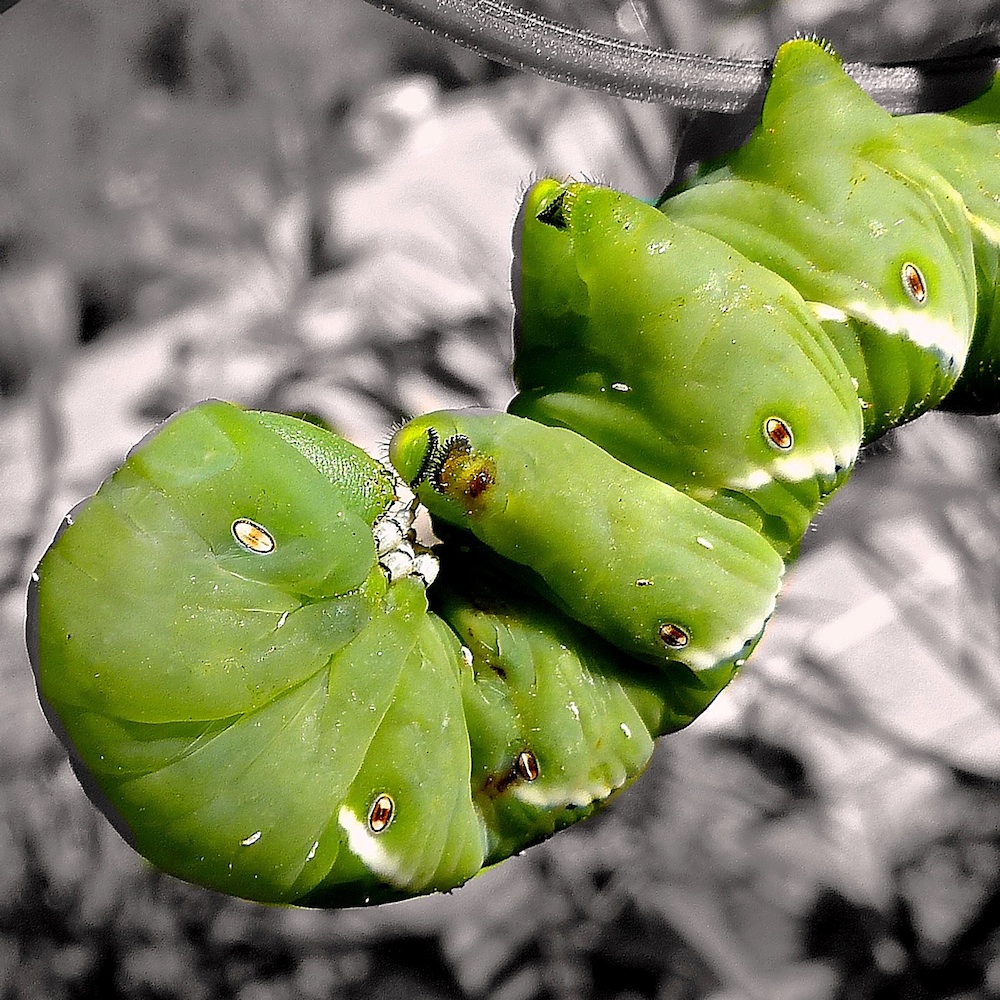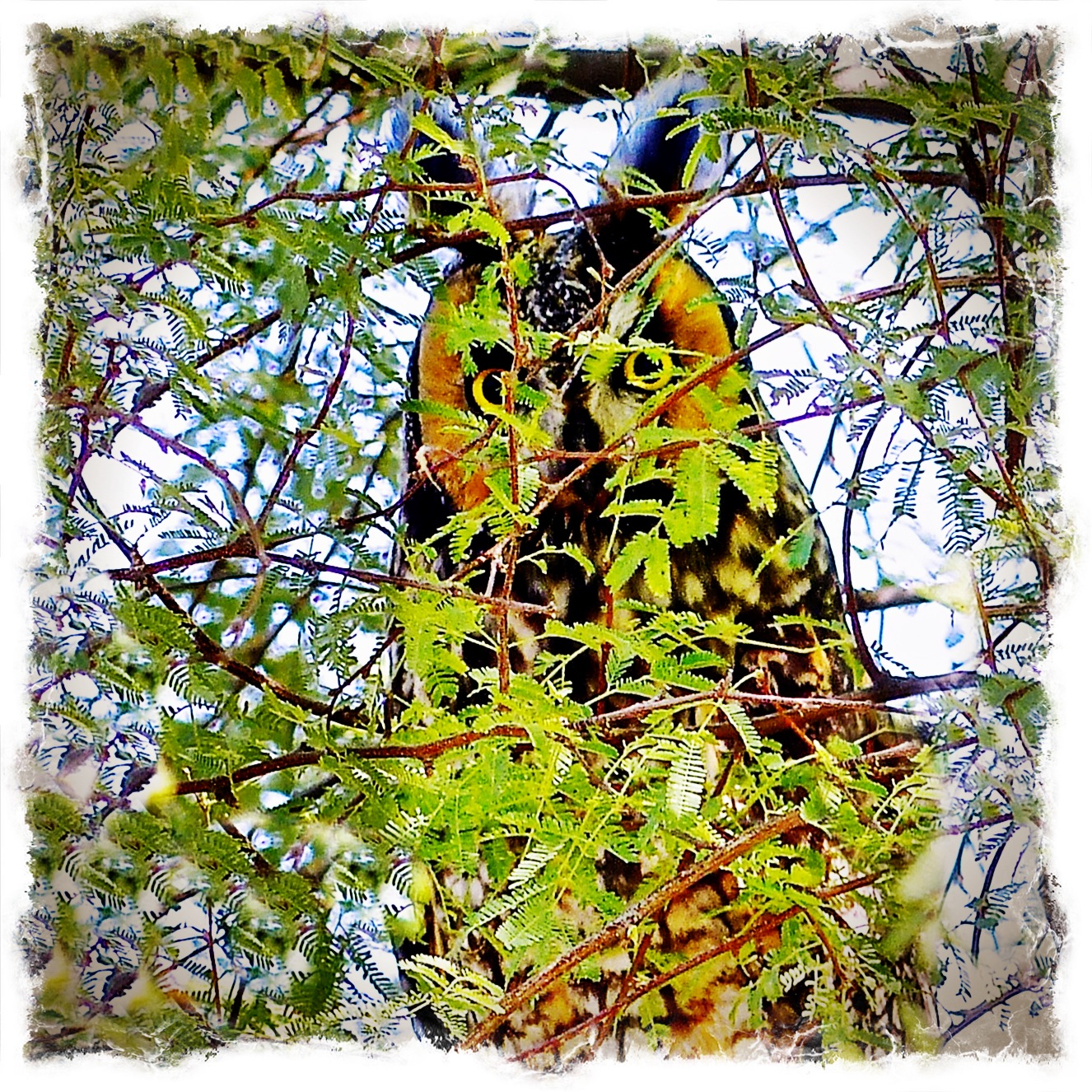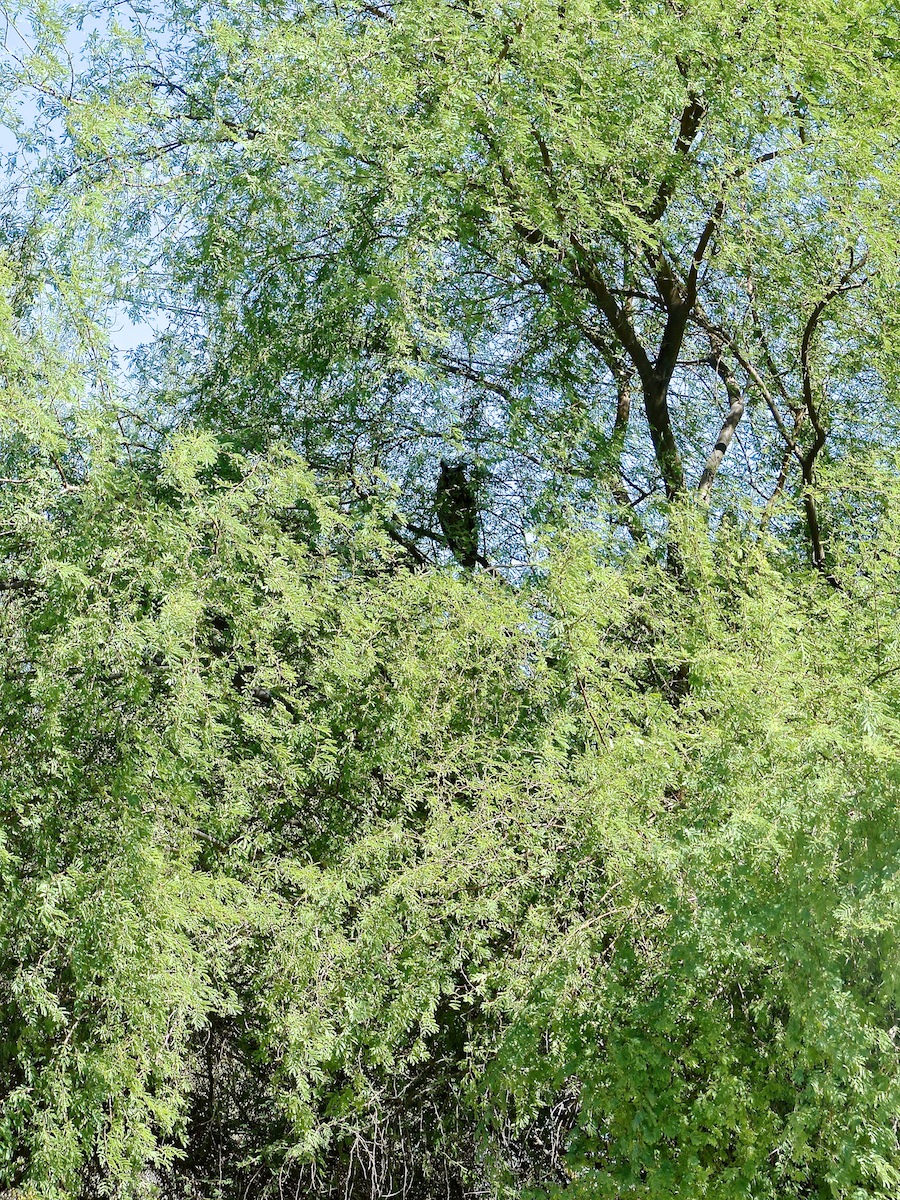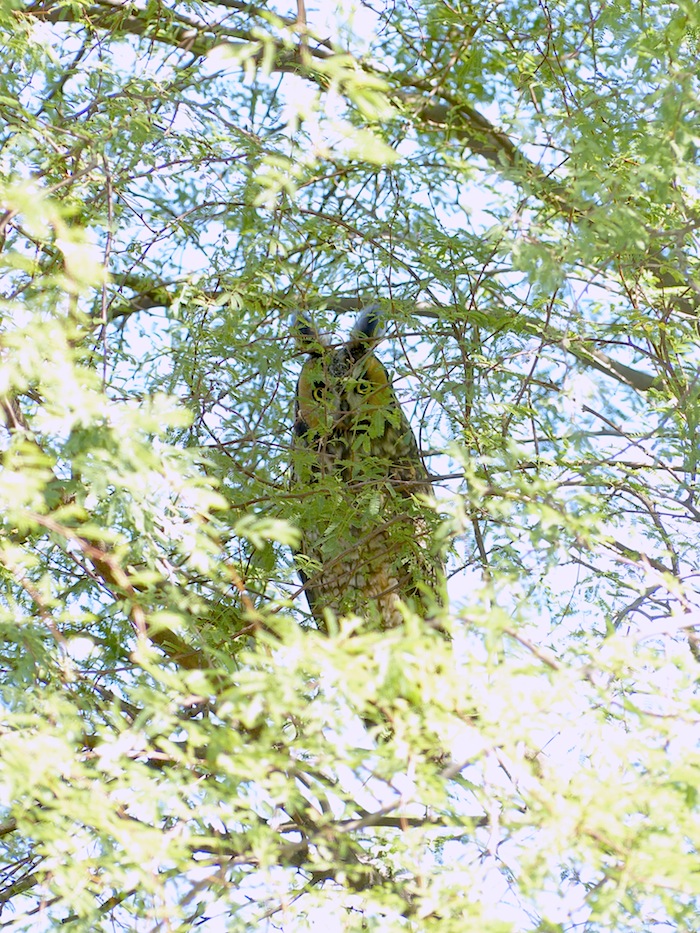Hornworm. That is all.
Close-up of a Sphinx Moth caterpillar. Green. Giant. Loves chile plants. (photo A.Shock)

Close-up of a Sphinx Moth caterpillar. Green. Giant. Loves chile plants. (photo A.Shock)

Big excitement around here yesterday! While looking for a Mockingbird that had been singing loudly all morning but was anomalously out of sight, I found a thrilling visitor in our yard: a Long-Eared Owl. It was perched in our back yard acacia tree, just about 9 or 10 feet up. It wasn’t hard to see, once my eyes had accidentally fallen upon it. Despite the thin screening of fine foliage it was relying on for coverage, the blue sky behind gave away its owliness (see photos below).
Long-Eared Owls are not something you see every day. It’s not because they’re rare in the Western U.S., people just don’t spot them very often.
>> Artsy edit of yesterday’s owl, keeping an eye on me keeping an eye on it. Very thankful for a long lens, so I didn’t have to get too close! (photo A.Shock)
This is because for the most part, they’re very hidey creatures, even for owls. Good camo — including spectacular “ear” tufts that are more centrally located and longer relative to its head than those of Screech Owls or Great Horned Owls, plus a bark-like bar-spotted belly pattern — is one reason Long-Eareds are seldom seen. They have great trust in this camo, and yesterday’s bird showed this confidence. It knew I was looking at it, but it held still and didn’t shift, except to open its eyes briefly. The same strategy of motionlessness worked on the local songbirds as well. They knew it was there — I saw lots of them come in to check it out, woodpeckers, hummers, finches, thrashers — but their behavior and vocalizations never became anything as frenzied as a “mob”. The owl sat quietly, and the scene didn’t escalate. I’ve seen Cactus Wrens and Verdins pitch bigger fits over an Elf Owl, a bird which is a fraction of the size of the Long-Eared.
It spent the afternoon dozing and swivelling its head occasionally — I could see it from the safe distance of the back porch, with binoculars — its magnificent cranial tufts wafting slightly in the breeze. At twilight, it spent some time preening, bending its head over its back to align long primaries and tail feathers. At full dark, it gave a raspy bark and flew out into the night.
Like many birders, I’m sometimes asked how to spot an owl. This is one of the best ways: be sure you always look for the Mockingbird. Not literally always a Mockingbird, of course. But one of the biggest joys of birding (or any sort of getting outside activity) is that you may not find what you’re looking for, but there’s always something to see.
And, also: a dark owl shaped blob in a tree is pretty much a dead giveaway!
 Long-Eared Owls are considered a “medium-sized” owl: bigger than a Screech Owl, but smaller than a Great Horned Owl. If you want to read more about this species, click here.
Long-Eared Owls are considered a “medium-sized” owl: bigger than a Screech Owl, but smaller than a Great Horned Owl. If you want to read more about this species, click here.
For the record, here are a couple of less-tweaked images of the owl in situ. Be sure to click to enlarge! (All photos A.Shock)

I’ve noticed a pattern. In late September and early October, Spadefoots come out and wander around the yard. Some are small, and look like young of the year. Some are less small, and may be hatched in previous seasons.
Today I noticed an agitation in the pool — my workspace looks over the shallow end — and I went out to check, expecting a lizard. We’ve got a wildlife ramp set up, but not all plunge-victims find it in time, so I always go out to see what’s causing ripples.
It was a fairly well-grown Spadefoot. As I’ve mentioned here in the past, Spadefoots are not technically toads, although you’d never know by looking, or at least I wouldn’t know. Technically, they are “toad-like amphibians”. Or so I’ve read.
Here’s an eye-level shot of today’s TLA (toad-like amphibian)
You’ll just have to imagine me lying on my belly on the gritty pool deck with the end of the macro lens just centimeters off this guy’s nose. I think the proximity of the lens is what accounts for the wacky eye-angle: parallax.
more info
#333300;”>And look at those clutching little fingers — I LOVE toad hands. (Yes they’re not toads, and yes they’re not hands, but you know what I mean). Also, it’s hard to tell where its smile ends — does it wrap all the way around its shoulders like a shawl? Am I in danger of being swallowed? In case you’re wondering, its skin isn’t really blue, but it was in the shade, and the digital process cooled its natural tans and dark olives to the color you see. The eyes, however, really are that shattered-glass golden green. The whole animal is not quite three inches long.
I had to rescue it out of the pool twice, and we’ll have to keep checking the filter basket for a few days. At some point, the Spadefoot will have hunted itself into a state of packing enough stored energy to survive its over-wintering self-interment. Then it’ll dig in somewhere in soft soil to wait for next year’s summer storms, when the thunder will boom it up from the ground to enjoy the moist monsoon nights.